Leasing & Hire Purchase Pro’s & Con’s
What are the principle advantages and disadvantages?
Hire Purchase and leasing can provide considerable benefits to businesses, but they are not necessarily suitable for every business or for every purchase. There are a number of considerations to be made.
Certainty
A hire purchase or leasing agreement has a medium term facility that cannot be withdrawn, provided the payments are made. The uncertainty that may be associated with facilities such as overdrafts, which are repayable on demand, is removed. However, both hire purchase and leasing agreements are long term commitments and it may not be possible, or could prove costly, to terminate them early.
Budgeting
The regular nature of the payments are fixed throughout the hire purchase or lease agreement, so a business will know at the beginning of the agreement what the repayments will be. This can be beneficial in times of low, stable or rising interest rates but may appear expensive if the rates are falling. On some agreements, such as those for a longer term, the finance company may offer the option of a variable rate interest. In such cases, rentals or instalments will vary with current interest rates, hence it may be more difficult to budget for the level of payment.
Security
Under both hire purchase and leasing, the finance company retains the legal ownership of the equipment, at least until the end of the agreement. This normally gives the finance company better security than lenders of other types of loan or overdraft facilities. The finance company may therefore be able to offer better terms.
The decision to provide finance to a small or medium sized business depends on that business’ credit standing and potential. Because the finance company has security in the equipment, it could tip the balance in favour of a positive credit decision.
Maximum Finance
Hire purchasing and leasing could provide finance for the entire cost of the equipment. There may, however, be a need to out down a deposit for the hire purchase or to make one or more payments in advance under a lease. It may be possible for the business to ‘trade-in’ other assets which they own, as a means of raising the deposit.
Use of Resources
If small and medium sized businesses wish to rely on a mix of finance, hire purchase and leasing can extend the range of facilities available and give them access to medium term finance.
It is, however, important to weigh up the interest and other costs of the different forms of finance available, against the benefits provided.
Hire purchasing and leasing can remove the need to tie up resources in capital equipment, by spreading the cost and timing of the expenditure to coincide with the expected future revenue flows of the business.
Tax Advantages
Hire purchase and leasing give the business the choice of how to take advantage of capital allowances. If the business is not profitable, it can claim its own capital allowances through hire purchase or outright purchase. If it is not in a tax position or pays corporation tax at the small companies’ rate, then a lease could be more beneficial to the business. The leasing company will claim the capital allowances and pass the benefits on to the business by way of reduced rentals.
Cartek Vehicle Solutions.
Unit 6 Hersham Farm Business Park
Longcross Road, Longcross
Surrey KT16 0DN
Tel: 01483 799499
Email:
info@cartek.co.uk
Mark Wells T/A: Cartek Vehicle Solutions (FRN: 765618) is an Introducer Appointed Representative (IAR) of Meridian Finance Partners Ltd (FRN: 661646) which is authorised and regulated by the Financial Conduct Authority. Registered with the BVRLA number 2278.
All Rights Reserved | Cartek Vehicle Solutions
Website by Blue Lizard
